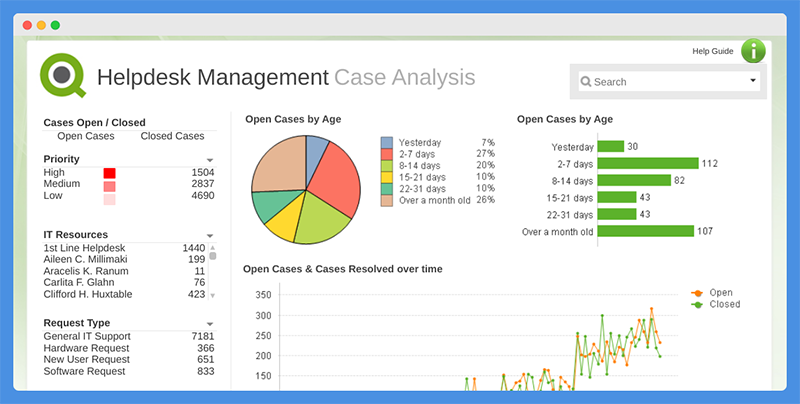Personal Career & Learning Guide for Data Analyst, Data Engineer and Data Scientist
As a data analyst, one of the most important concepts to understand is the difference between dimensions and measures. In QlikView, these concepts are used to organize and analyze data in a way that makes it easier to understand.
Dimensions are the categories or labels that describe the data you’re working with. For example, in a sales database, the dimensions might include product categories, geographic regions, or time periods. Dimensions provide the context for the data, allowing you to understand the relationships between different pieces of information.
Measures, on the other hand, are the numeric values that you’re analyzing. For example, in a sales database, the measures might include total sales, number of units sold, or average price per unit. Measures are used to quantify the data and provide insights into the relationships between different pieces of information.
QlikView makes it easy to work with dimensions and measures by providing a simple drag-and-drop interface. With just a few clicks, you can add and remove dimensions and measures, as well as create new ones. This makes it easy to manipulate the data and get the results you’re looking for.
One of the biggest benefits of using QlikView for dimensions and measures is its ability to save time and effort. With its intuitive interface and powerful algorithms, QlikView can quickly and easily create and manipulate dimensions and measures, freeing up time that can be better spent on other tasks.
Another benefit of using QlikView for dimensions and measures is its ability to provide accurate results. With its powerful algorithms and data analysis tools, QlikView can quickly and easily create and manipulate dimensions and measures, reducing the risk of errors that can occur when data is manipulated manually. This helps ensure that the insights and decisions made by data analysts are based on accurate and reliable data.
In addition to its time-saving and accuracy benefits, QlikView also provides other features that are useful for data analysis. This includes the ability to sort and filter data, as well as the ability to perform calculations and transformations on the data. With QlikView, users can easily manipulate their data to get the results they’re looking for.
Another useful feature of QlikView for dimensions and measures is its ability to save and reuse transformations. Once a set of dimensions and measures have been created, users can save them and reuse them at any time. This makes it easy to work with data over time, and eliminates the need to repeat the same transformations over and over again.
In conclusion, QlikView provides a powerful and flexible solution for working with dimensions and measures, making it a valuable tool for data analysts. With its ability to save time and effort, provide accurate results, and make working with dimensions and measures easy and intuitive, QlikView is a must-have tool for anyone working with data. Whether you’re working with a small or large data set, QlikView has the tools you need to get the results you’re looking for, making it an essential tool for anyone working in data analysis.
QlikView for Data Analyst – QlikView – Dimensions and Measures
 Loading...
Loading...
Latest end-to-end Learn by Coding Projects (Jupyter Notebooks) in Python and R:
All Notebooks in One Bundle: Data Science Recipes and Examples in Python & R.
End-to-End Python Machine Learning Recipes & Examples.
End-to-End R Machine Learning Recipes & Examples.
Applied Statistics with R for Beginners and Business Professionals
Data Science and Machine Learning Projects in Python: Tabular Data Analytics
Data Science and Machine Learning Projects in R: Tabular Data Analytics
Python Machine Learning & Data Science Recipes: Learn by Coding
R Machine Learning & Data Science Recipes: Learn by Coding
Comparing Different Machine Learning Algorithms in Python for Classification (FREE)
There are 2000+ End-to-End Python & R Notebooks are available to build Professional Portfolio as a Data Scientist and/or Machine Learning Specialist. All Notebooks are only $29.95. We would like to request you to have a look at the website for FREE the end-to-end notebooks, and then decide whether you would like to purchase or not.
